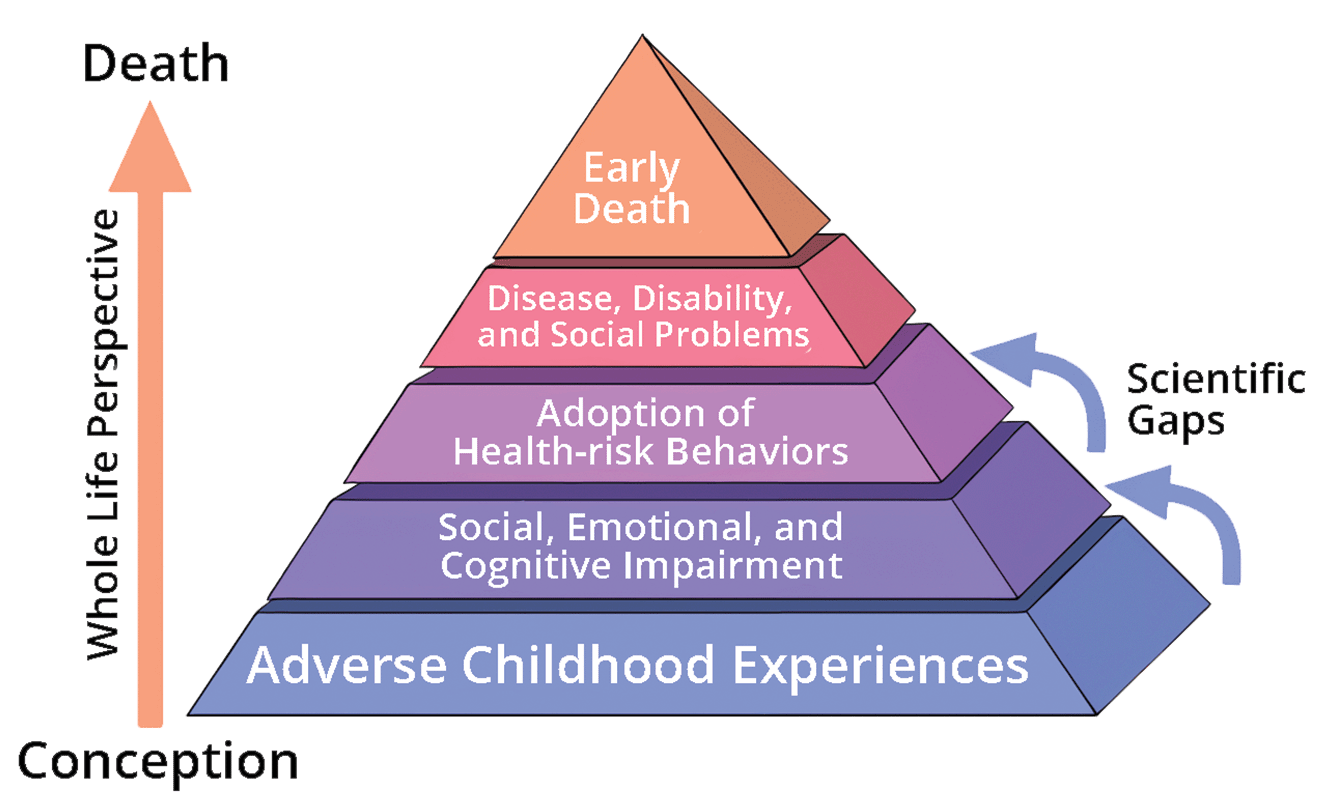ACEs
What are Adverse Childhood Experiences (ACEs)?
Adverse Childhood Experiences are events or experiences that are stressful or traumatic. These include abuse, neglect, witnessing domestic violence, or experiences in the home such as crime, parental conflict, mental illness, and substance abuse. These ACEs have been found to be strongly related to challenges in development and a wide range of health problems across the lifespan.
How were ACEs identified?
ACEs are the results of the ACE Study, which is an ongoing collaborative research study conducted by the Centers for Disease Control and Prevention in Atlanta, GA, and Kaiser Permanente in San Diego, CA. Over 17,000 Kaiser patients participating in routine health screening volunteered to participate in the Study.
Click here to learn more about the Study.
How can we use ACEs to guide prevention work?
According to the CDC, “The ACE Study findings suggest that certain experiences are major risk factors for the leading causes of illness and death as well as poor quality of life in the United States. Progress in preventing and recovering from the nation’s worst health and social problems is likely to benefit from understanding that many of these problems arise as a consequence of adverse childhood experiences.” (Information found at http://www.cdc.gov/ace/index.htm )
This information helps to inform prevention practice because by preventing adverse childhood experiences or by providing services directly related to the mitigation of those experiences, we can hope to improve long-term well-being outcomes in our communities. This model shows the impact of unmitigated Adverse Childhood Experiences over the lifespan and the potential ramifications on a person’s long-term well-being.
How do states collect ACEs information outside of the original Kaiser group?
States collect ACEs information in a variety of ways. Many states collect ACEs information on the Behavioral Risk Factor Surveillance Survey (BRFSS), which is an annual telephone survey completed in every state. In 2011 more than 500,000 phone surveys were conducted nationwide. In 2011, five states collected ACE information on the Behavioral Risk Factor Surveillance Survey (BRFSS).
Thus far, the BRFSS results collected and analyzed by states are consistent with the findings from the original ACE Study in demonstrating that more adverse experiences in childhood lead to poor health and behavioral risk factors later in life.
How can CBCAP Lead Agencies incorporate ACEs into child abuse prevention efforts?
Since ACEs are strongly related to later health and well-being outcomes, prevention or mitigation of those experiences will be key to helping to address long-term negative consequences. Specifically, CBCAP Leads can:
- Collect state and county level ACE data to drive decision making (this could be done by collaborating with the Health Department on the BRFSS to include the ACEs indicator questions)
- Increase awareness of ACEs among community-based organizations and how they might impact families and children
- Understand how ACEs align with protective factors and impact risk factors and include those crosswalks whenever possible
- Be aware of ACEs when awarding programs or services and how proposed activities might address them
- Understand how ACEs data might help to identify at-risk populations to target services
What can CBCAP Lead Agencies do to learn more?
There is a wealth of information available about the ACE study at the CDC. These sites include detailed information on the research, printable versions of the questions, and information about the long-term implications of Adverse Childhood Experiences.
